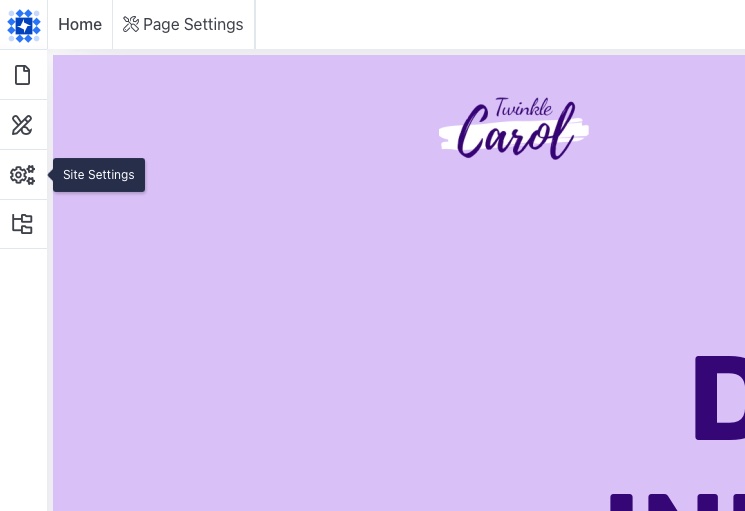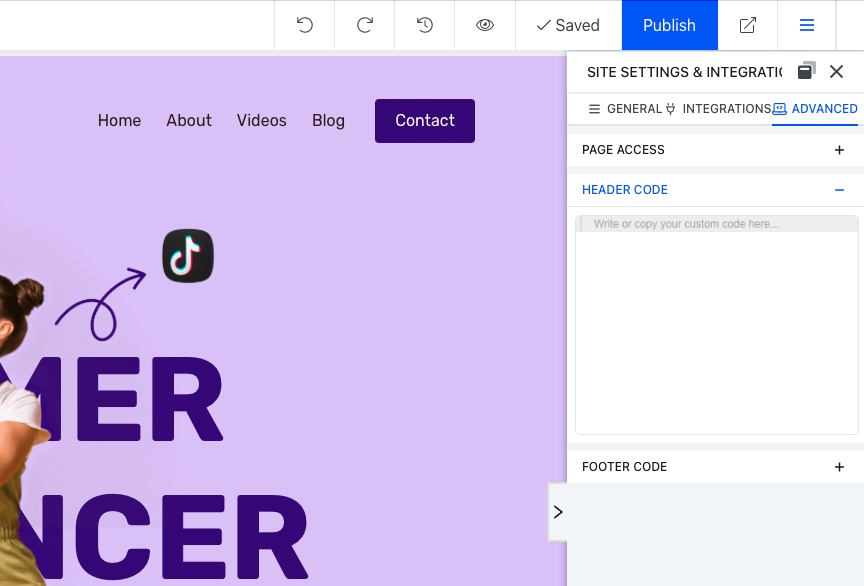Safeguarding data and respecting user privacy have become crucial for digital business operations. The introduction of the Digital Markets Act (DMA) has made it even more important for website owners, content managers, and developers to ensure their websites comply with the regulations it sets forth.
In this article, we’ll take a closer look at how you can make your Dorik website DMA-compliant, with a special focus on consent management.
But before we dive into the details, let’s first understand the importance of DMA privacy compliance and explore the features and benefits of the Dorik CMS and website-building platform.
Understanding the importance of privacy compliance with the Digital Markets Act (DMA)
The Digital Markets Act (DMA) is a regulation aimed at promoting fair and open digital markets within the European Union. It focuses on ensuring competition, protecting user rights, and providing a level playing field for businesses operating in the digital market.
Compliance with the DMA will be crucial for website owners with digital operations and users in the European Union and/or European Economic Area, as noncompliance can result in hefty fines and other penalties for the designated gatekeepers. For third parties that rely on the gatekeepers’ platforms and services for advertising, data, etc., noncompliance could result in loss of access to those platforms, resulting in loss of audience, data, revenue, and potential reputational damage.
However, compliance with the DMA goes beyond avoiding penalties. It’s about safeguarding user data and privacy and building trust with your audience.
Consent management mechanisms, such as cookie banners or consent banners, are required by the DMA to obtain explicit and informed consent from users before processing their personal data. Consent management not only helps you as a website owner to comply with the DMA but also plays a crucial role in building a positive user experience, enhancing trust, engagement, and customer loyalty.
Moreover, proper consent management will be a requirement for continued usage of gatekeeper services, such as advertising with Google Ads or Facebook Ads. These platforms will require third-party websites to have proper consent mechanisms in place to both collect and signal valid consent for compliance with their own policies and regulations.
Failure to comply with these requirements could lead to disruption or even prevention of using gatekeepers’ services, which could significantly impact your online presence and marketing efforts, especially if you’re a small and medium-sized business (SMB) with a strong dependence on digital ad revenue.
“Ensuring proper consent management on your Dorik website is not just a matter of compliance with the DMA, but also a crucial step to avoid disruptions in your marketing strategy and to maximize the reach and effectiveness of your online advertising campaigns.”
– Paulo Santos, Senior Partner Manager for Dorik at Usercentrics
Exploring the features and benefits of Dorik CMS and website building platform
Dorik is a powerful website-building platform that enables you to create professional websites without any coding knowledge. It offers a range of features that make it an ideal choice if you require DMA compliance:
- Landing pages: Dorik provides pre-designed templates and UI blocks that enable you to create stunning landing pages that are both visually appealing and user-friendly.
- White-label CMS: With Dorik’s white-label CMS, you can build websites under your brand for your clients. You can add your own brand’s logo and colors, and even customize the dashboard.
- Blogging platform: Dorik’s built-in blogging platform enables you to create and publish blogs with all the features you need to rank on search engines and grow your audience.
- Membership sites: If you want to monetize your website, Dorik’s membership feature enables you to create monthly, yearly, or one-time payment plans and offer exclusive content to your paying members.
- Analytics: Dorik provides user analytics that enable you to track user behavior and gain insights into how users interact with your website. This can be valuable for monitoring consent management and achieving and maintaining compliance.
- Search Engine Optimization (SEO): Dorik offers native SEO optimization features, enabling you to optimize your website’s content for search engines and maximize its reach.
Now that we have a good understanding of the importance of privacy compliance and the features of the Dorik platform, let’s delve into the steps to make your Dorik website compliant with the DMA, with a focus on consent management.
Consent management with Dorik
Consent management plays a crucial role in DMA compliance, as it ensures that website visitors have control over their personal data and the ability to provide or withdraw consent for data processing activities.
To implement effective consent management on your Dorik website, we recommend using Cookiebot™ by Usercentrics, the best ready for DMA consent solution that enables you to achieve and maintain easy, automated DMA compliance.
Cookiebot seamlessly integrates with Dorik, and it enables you to easily create and customize cookie banners, implement granular consent options, and track user consent preferences.
How to add a Cookiebot™ cookie banner to your Dorik website: step-by-step guide to prepare for DMA privacy compliance
Step 1: Sign up for a Cookiebot CMP account
Go to the Cookiebot™ website and sign up for an account. You’ll need to provide some basic information about your website.
Step 2: Configure your settings
Once you have signed up, you will be taken to the Cookiebot CMP dashboard. Here, you can configure your settings according to your preferences. This includes selecting your consent type, language, design, and other customization options.
Step 3: Add your website
In the Cookiebot CMP dashboard, click on the Add domain button and enter your website’s domain name. Follow the instructions to verify ownership of your website.
Step 4: Generate the Cookiebot script
After adding your website, Cookiebot™ will provide you with a script that needs to be added to your website’s code. This script enables Cookiebot™ to scan and control cookies on your website.
Step 5: Install the script on your Dorik website
Copy the script provided by Cookiebot™ and go to your Dorik website editor. Open the Site Settings section and look for the Header Code option under “Advanced” settings. Paste the Cookiebot™ script in the appropriate field.


Step 6: Customize the cookie banner
In the Cookiebot CMP dashboard, navigate to the Design section. Here, you can customize the appearance and layout of your cookie banner to match your website’s branding and your preferred user interface.
Step 7: Configure consent types
In the Cookiebot CMP dashboard, go to the Consent types section. Here, you can define the different types of cookies and other tracking technologies used on your website and the corresponding consent requirements for each type.
Step 8: Publish your changes
Once you have completed the configuration and customization of your Cookiebot CMP cookie banner, click on the Publish or Save button in your Dorik website editor to make the changes live.
Step 9: Test your cookie banner
Visit your Dorik website to ensure that the Cookiebot™ cookie banner is displaying correctly and functioning as intended. Test different scenarios, such as accepting or rejecting cookies, to verify the functionality.
Step 10: Monitor and update
Regularly monitor your Cookiebot CMP dashboard to stay informed about any changes or updates related to your required cookie compliance. Update your cookie settings and consent types as needed to ensure ongoing compliance with the GDPR, DMA and other new or evolving data privacy regulations.
Congratulations! You have successfully implemented your consent management solution and are ready for the DMA on your Dorik website using Cookiebot™.
Optimizing your Dorik website for DMA compliance
In addition to consent management, there are other aspects of your Dorik website that you should consider to achieve DMA compliance.
Blog posts and landing pages
Create website content that clearly communicates your data processing activities and provides users with information about their rights and consent options.
Analytics
Leverage Dorik’s analytics features to track user consent preferences, monitor the effectiveness of your consent management setup, and enable you to optimize the CMP for even higher consent rates.
Enhancing Dorik website user experience for DMA compliance
User experience (UX) plays a crucial role in ensuring DMA compliance. Here are some practical tips to optimize the UX of your Dorik website for consent management:
Clear and concise information
Be transparent about your data processing activities, consent options, and user rights. Use simple language and avoid technical or legal jargon.
Granular consent options
Offer granular consent options that enable users to choose which data processing services they consent to. This gives users more control and enhances transparency.
Intuitive design and navigation
Ensure that your website’s design and navigation are user-friendly and intuitive. Make it easy for users to find information about consent management and exercise their rights.
Transparent cookie policy
Clearly communicate your website’s privacy policy and cookie policy and provide users with options to manage and control cookies. If you don’t have one yet, try out our privacy policy generator.
Conclusion and next steps with Dorik
Ensuring DMA compliance is crucial for website owners, content managers, and developers with digital EU operations that rely on the gatekeepers’ platforms and services for audience, data, and revenue. By following the steps outlined in this article, you can make your Dorik website compliant with the DMA, with a specific focus on consent management.
Remember to leverage the features and benefits of the Dorik CMS and website-building platform, as well as the seamless integration with Cookiebot CMP, to optimize your website’s data compliance.
Don’t forget to subscribe to our newsletter to stay updated with the latest developments in data protection and user privacy to maintain compliance and build trust with your website visitors.
Start your 14-day free Cookiebot™ trial
Achieve Dorik website data privacy compliance with the GDPR and DMA. Free plan available for websites with up to 50 pages.
Usercentrics A/S (Cookiebot™) does not provide legal advice, and information is provided for educational purposes only. We always recommend engaging qualified legal counsel or privacy specialists regarding data privacy and protection issues and operations.